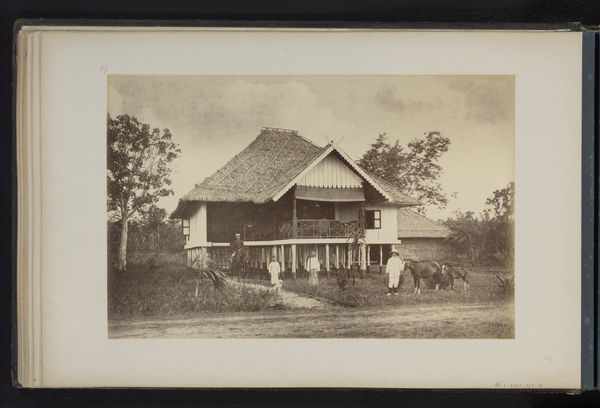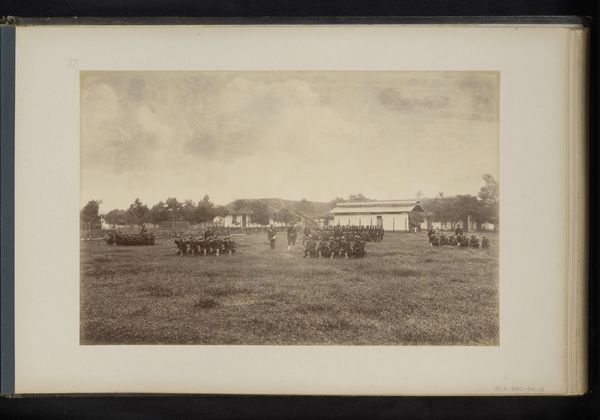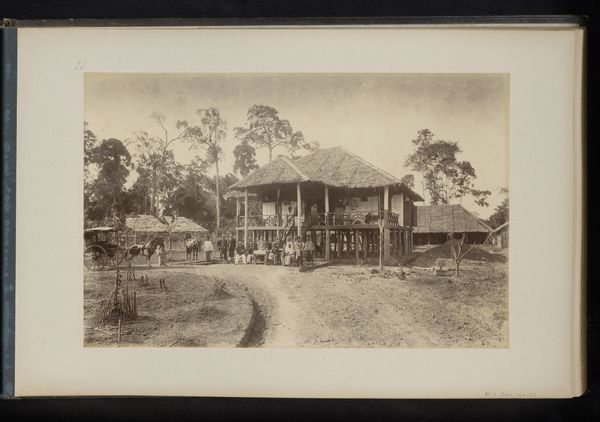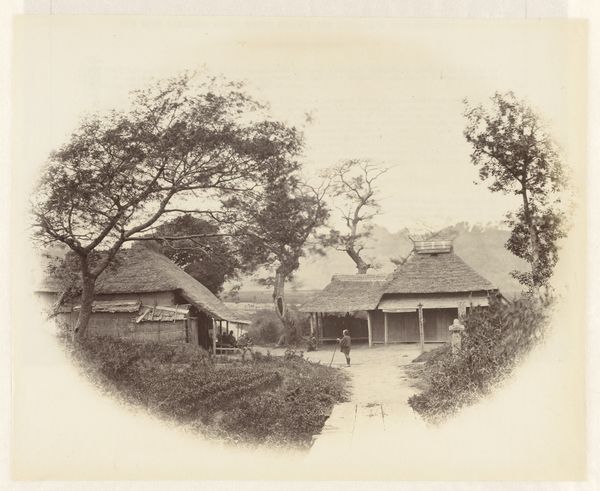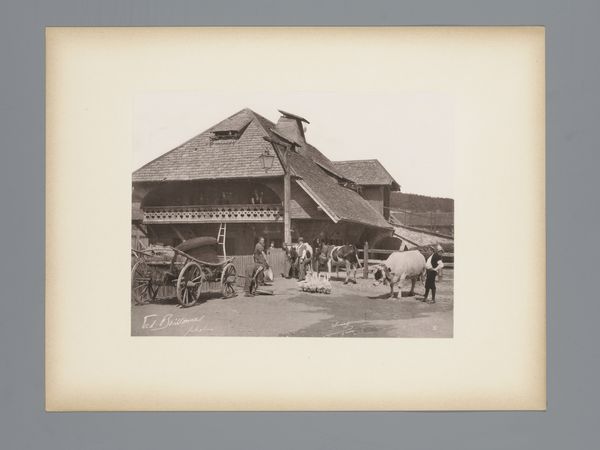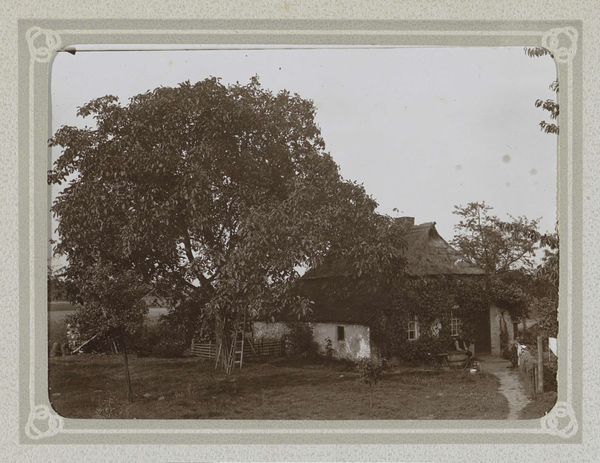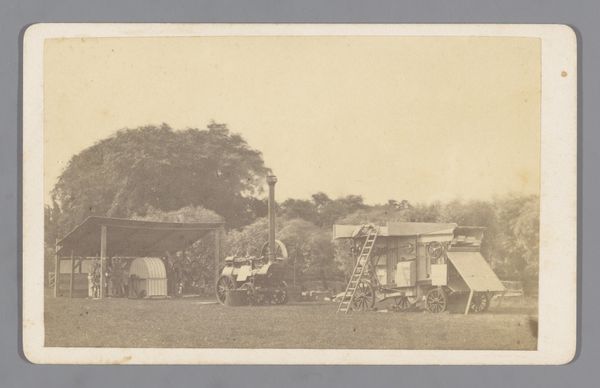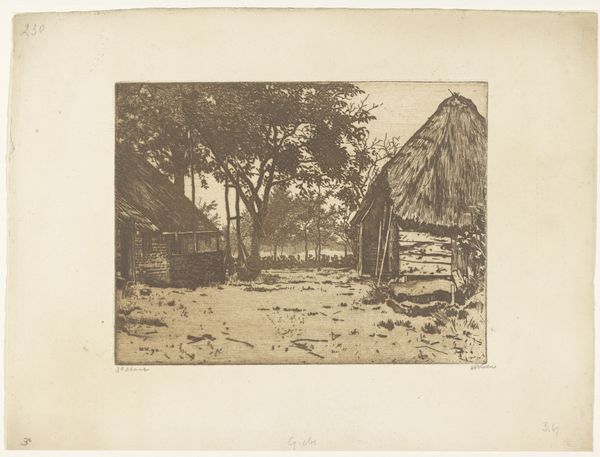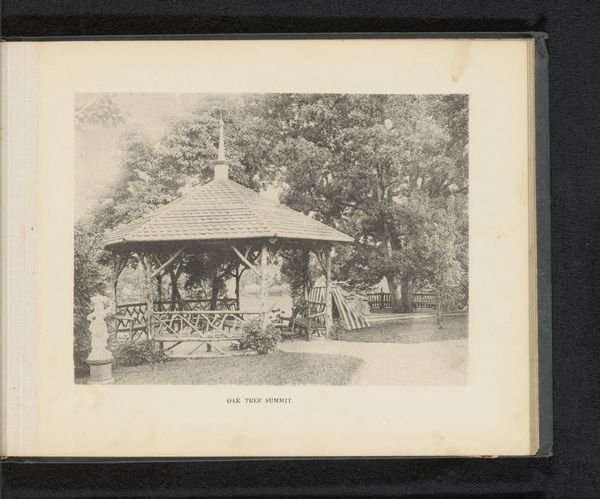
Groepsfoto van de contractarbeiders en opzichters op de Bindjai Plantage, Sumatra c. 1890 - 1900
0:00
0:00
heinrichernstco
Rijksmuseum
photography, gelatin-silver-print
#
pictorialism
#
landscape
#
photography
#
group-portraits
#
orientalism
#
gelatin-silver-print
Dimensions: height 241 mm, width 378 mm
Copyright: Rijks Museum: Open Domain
Editor: So, here we have a gelatin silver print, circa 1890-1900, a photograph entitled "Groepsfoto van de contractarbeiders en opzichters op de Bindjai Plantage, Sumatra" currently held in the Rijksmuseum. The image depicts a large group of people outside a long building. The light is diffused. I am immediately struck by the sheer number of individuals pictured, and what feels like the inherent formality of a staged photograph. What symbols and narratives jump out at you, looking at this image? Curator: The composition does establish a deliberate power dynamic through placement; the image reads like a carefully constructed tableau vivant, embedding specific cues regarding power. Note how the figures are arranged in relation to the building - and one another - indicating a strict hierarchy? Who is framed where, and how might that reflect their role within the plantation structure? Editor: That's an interesting point! I hadn’t considered how deliberate the placement must have been. It makes me think about other group portraits and how social dynamics always seem to find their way into the imagery. Is this sort of symbolism typical for photos from that time period, in such settings? Curator: Precisely. Visual codes related to colonialism and its inherent power structures were pervasive at the time. Look closely – what details, beyond mere arrangement, suggest symbolic weighting, such as clothing or even facial expressions? Consider, also, how photography itself played a role as a tool for documenting and codifying colonial control. Do you feel like the presence of pictorialism enhance the sense of staging, which reinforces this power dynamic even further? Editor: Yes, the diffused light and composition almost romanticize a scene that I know was exploitative. I am going to keep an eye out for orientalist, colonialist, and other exploitative tendencies present in the works, and remember to always challenge the visual narratives! Curator: Exactly, examining images through the lens of power structures unveils layers of meaning and reinforces the symbolic continuity of history, culture and the collective psyche.
Comments
No comments
Be the first to comment and join the conversation on the ultimate creative platform.
